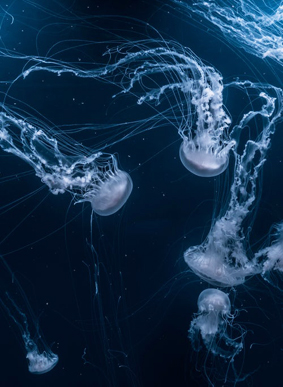A surge in slimy jellyfish on European shores saw 90 people on a single beach in Germany being treated for jellyfish stings in just three days. A regional newspaper reported that tens of thousands of lion’s mane jellyfish had washed ashore over the weekend. Lion’s mane is the largest species of jellyfish and its sting is rarely fatal but requires medical treatment. One of the 90 affected people has severe allergic reaction.
Although the jellyfish numbers have dropped after the sudden weekend surge, locals think this is just a temporary relief. Jellyfish usually drift on currents, which means that water temperature or a change in the wind could wash them ashore in droves again.
A sudden rush of jellyfish have been spotted across Europe in recent weeks. Sweden’s west coast has suddenly become home to the clinging jellyfish – a species that had not been seen in 88 years. The tiny creatures are barely a few centimetres in diameter and were discovered when a marine biologist investigated reports of bathers being stung in the waters off Tjörn.
The same lion’s mane jellyfish that plagued Germany’s coast have been spotted in the waters around Britain and Ireland. Larger than usual numbers of jellyfish have been spotted off some French beaches, too. For several years, reports have emerged that jellyfish numbers have boomed leading to unbalanced ecosystems and damage to fish farms.
Jellyfish surface in “blooms” that carpet the surface of the sea. They can appear in huge numbers, moving like a swarm. Some 10,000 species come under the generic ‘jellyfish’ name – and they don’t all behave, breed or bloom the same way.
However, attempts are being made to solve the problem. An EU project called GoJelly has been launched to take the ‘annoying and dangerous’ creatures and turn them into something useful. While the main project is to create a microplastic filter out of jellyfish mucus to clean the oceans, they also think jellyfish populations could be controlled if humans ate them. Going ahead, they plan a jellyfish cookbook and promise that the finished foodstuffs won’t taste bad.



